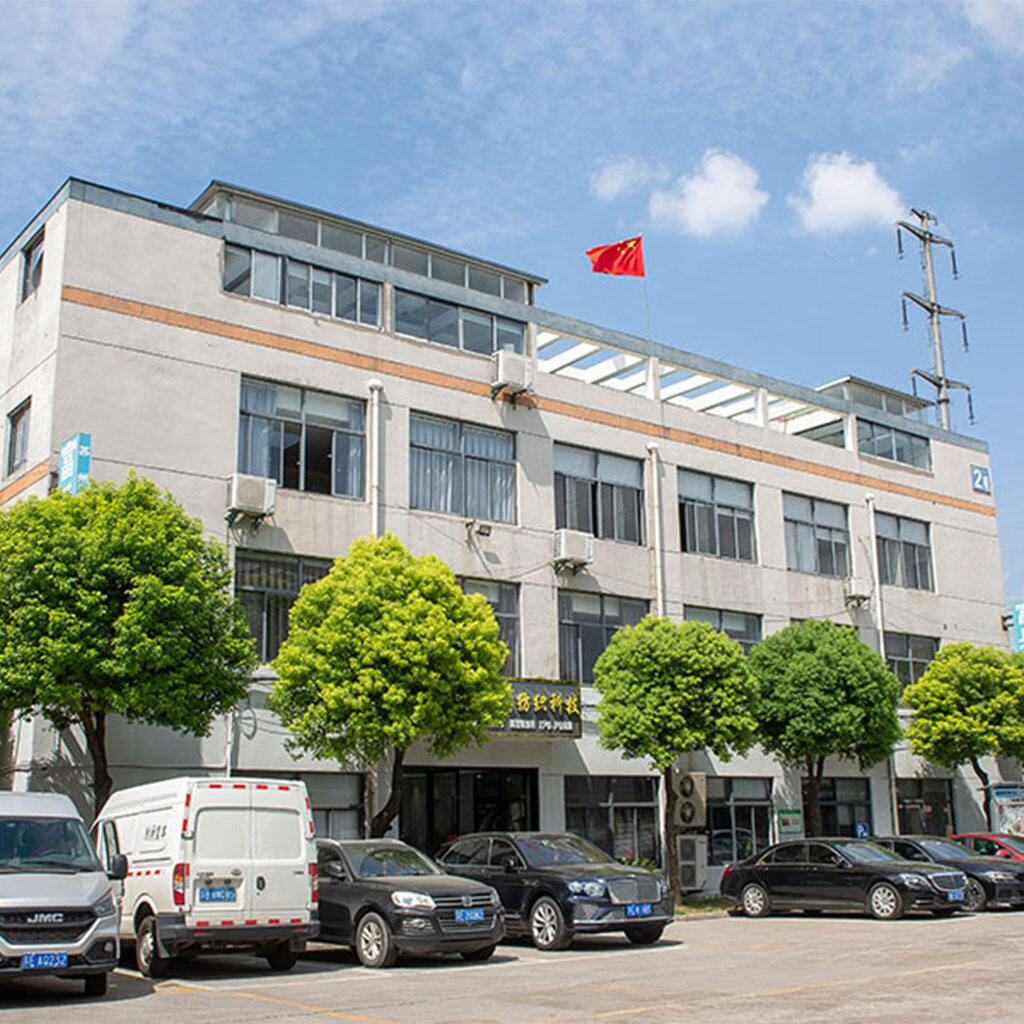Assessing Quality Management Systems in Polyester Fabric Manufacturing Companies
Understanding Quality Control Procedures and Their Role in Consistent Output
Top polyester fabric makers have developed several layers of quality checks to keep defects below about 2% when producing large quantities. The system starts with checking the raw materials, like making sure the PET pellets are clean enough. During production, they constantly watch things like how hot the melting process gets, usually keeping it within around 5 degrees Celsius either way. At the end, special machines look for tiny flaws in the fabric down to less than half a millimeter in size. These strict quality measures really make a difference in how consistent the products turn out. Factories that invest in automatic scanning technology see roughly a third drop in customer complaints versus those still relying on people to spot problems manually according to research published last year in Textile Quality Journal.
Evaluating Implementation of Quality Management Systems (QMS) Like ISO 9001
About 94 percent of leading polyester producers have ISO 9001 certification these days, which helps them implement quality management systems that cut down on process variations by roughly 40% over around 18 months after implementation. When looking at what really matters in these systems, companies need solid documentation for fixing problems before they happen, proper records showing workers actually completed their training requirements, and regular checks from outside auditors. Good quality management lets factories hit process capability scores below 0.8 sigma for important measures such as yarn strength that needs to be at least 4.5 centinewtons per denier, plus color matching that stays within a Delta E value of no more than 1.0 when tested under standard daylight conditions known as D65 lighting.
Standardized Testing Methods for Performance Testing in Polyester Production
ASTM D5034 (tensile strength) and AATCC 16 (colorfastness) form the foundation of performance testing, with advanced manufacturers incorporating:
| Test Parameter | Industry Standard | Premium Benchmark |
|---|---|---|
| Abrasion resistance | ASTM D3886 | 25,000+ cycles |
| Hydrostatic pressure resistance | ISO 811 | 10,000+ mmH₂O |
| UV degradation | AATCC 186 | 5% strength loss |
These protocols help buyers objectively compare polyester fabric manufacturing companies' technical capabilities.
Case Study: How a Leading Manufacturer Reduced Defect Rates by 38% Using QMS Integration
One European manufacturer managed to cut defects by almost 40% over ten months thanks to quality management system upgrades. The company implemented several key changes during this period. First, they introduced automated SPI software which slashed variability in polymerization batches by nearly two thirds. Then there was the AI defect mapping system that kept adjusting loom parameters as needed throughout production runs. And finally, their supplier evaluation program helped reduce material inconsistencies by around 40%. The whole project cost approximately seven and a half million dollars but paid off handsomely. Customer satisfaction ratings jumped by 23 percentage points while production expenses dropped by nearly 20%. These results clearly show how investing in quality management can transform operations across the textile manufacturing sector according to findings published in Textile Manufacturing Review last year.
Inspecting Fabric Quality and Performance Characteristics
For polyester fabric manufacturing companies, rigorous evaluation of material characteristics separates market leaders from underperformers. This analysis requires systematic inspection of physical properties, chemical composition, and functional performance against industry benchmarks.
Fabric Construction and Properties: Weave Type, Denier, and Finish Effects
Polyester's performance begins with its structural foundation. Tight plain weaves (<18 denier) enhance tear resistance, while satin variations improve drape. Specialty finishes like antimicrobial coatings increase functional value but require compatibility testing—improperly applied treatments reduce moisture-wicking efficiency by up to 34% in controlled studies.
Physical Performance Testing: Tensile Strength, Shrinkage, and Abrasion Resistance
Industry standards such as ASTM D5430 for visual inspection and ISO 105-B02 for lightfastness provide reliable frameworks. Third-party verification reveals top mills achieve 23% fewer visual defects versus industry averages. Abrasion resistance proves critical in upholstery fabrics, with Martindale test leaders exceeding 50,000 cycles before thread breakage occurs.
Chemical Performance Testing: pH, Formaldehyde, and Colorfastness Standards
Post-production chemical residues threaten compliance—2023 textile recalls identified 41% of failures stemmed from formaldehyde exceedances. Advanced manufacturers now implement real-time pH monitoring during dyeing, reducing off-spec production by 18%. Colorfastness testing under UV exposure (ISO 105-B02) and chlorinated water (ISO 105-E03) ensures color retention across applications.
Appearance Inspection and Industry Standards for Visual Defects
The 4-point grading system (ASTM D5430) quantifies flaws per 100 linear yards:
| Defect Type | Acceptable Threshold | Rejection Impact |
|---|---|---|
| Slub/Yarn Variation | 8 points | 12% cost penalty |
| Oil Stains | 0 points | Full lot rejection |
Durability, Moisture-Wicking, and Functional Performance Evaluation
Modern polyester blends achieve moisture vapor transmission rates (MVTR) exceeding 6000 g/m²/24hr, outperforming cotton by 3:1 ratios. Martindale and Wyzenbeek abrasion tests remain critical validation tools—fabrics enduring 40,000+ cycles demonstrate 92% structural integrity retention in automotive seating trials.
Analyzing Sustainability Practices Among Polyester Fabric Manufacturing Companies
Environmental and social criteria in evaluating textile manufacturers
These days, customers want proof that manufacturers are actually cutting down on water usage by at least 30% compared to what's typical across the industry, plus they look for evidence of proper treatment of workers throughout the supply chain. Top polyester fabric makers have started sharing details about their closed-loop water systems and how much green energy they're using these days. These aspects matter because the textile sector contributes around 10% to worldwide carbon emissions according to recent UNEP data from last year. When it comes to social responsibility, certifications such as SA8000 are becoming just as important alongside environmental standards. Industry watchers note something interesting too: brands that score well on both fronts tend to get their business contracts renewed about 22% quicker than others based on latest 2024 market research findings.
Measuring sustainability through lifecycle analysis of polyester production
Looking at lifecycle assessments shows that when we recycle post-consumer PET mechanically, it cuts down on energy needs about half compared to making new polyester from scratch. On the flip side, chemical recycling can handle mixed fabrics which makes up for the extra money it takes at first, getting around 89% of materials back according to Textile Exchange data from last year. Forward-thinking companies are tracking environmental effects through all sorts of steps these days starting with how they make the basic building blocks right through until what happens when products finally get thrown away. And thanks to better software tools for doing LCAs, what used to take months of work is now done in under two days instead of twelve whole weeks.
The role of certifications like OEKO-TEX, GOTS, and Bluesign in verifying eco-compliance
According to Ecocert's 2023 report, third party certifications tackle around 78 percent of those pesky greenwashing worries when companies are sourcing textiles. Take OEKO-TEX Standard 100 for instance it blocks out 328 harmful substances before they even get into production. And then there's Bluesign certification which cuts down on water pollution risks by about two-thirds thanks to their controlled input approach during manufacturing. For polyester blends certified under GOTS standards, they need at least 70% organic content according to strict guidelines. What's interesting though is how these audit trails are now being verified using blockchain technology, making it much harder for anyone to fake documentation or misrepresent facts about their products.
Evaluating Raw Material Sourcing and Production Process Efficiency
Impact of Raw Material Quality on Final Fabric Consistency
The polyester fabric industry depends a lot on good quality raw stuff like purified terephthalic acid (PTA) and monoethylene glycol (MEG) if they want those fibers to come out right every time. Some research published last year in the Textile Research Journal showed something interesting too. When there's more than half a percent impurity in the PTA used as feedstock, we see around 23% more broken yarns happening during the weaving process. That's why most modern plants run their materials through gas chromatography tests first thing before starting polymerization. This helps keep things consistent from one production batch to the next, which matters a lot when trying to maintain product standards across large volumes.
Mapping the Polyester Production Process: From Polymerization to Finishing
The production workflow follows six critical stages:
- Melt polymerization: Combining PTA and MEG at 280°C to create polyethylene terephthalate (PET)
- Extrusion: Spinning molten PET into filaments through spinnerets
- Drawing: Aligning polymer chains to enhance tensile strength
- Heat-setting: Stabilizing fibers at 200°C to minimize shrinkage
- Texturizing: Imparting bulkiness for specific fabric applications
- Finishing: Applying coatings for moisture-wicking or flame-retardant properties
Leading producers use real-time viscosity monitoring systems to maintain <1% deviation in polymer melt flow rates during extrusion.
Recycled vs. Virgin Polyester: Quality, Scalability, and Industry Controversy
While recycled polyester (rPET) reduces reliance on fossil fuels by 59% (Textile Exchange 2023), its shorter polymer chains create challenges:
| Characteristic | Virgin PET | Recycled PET |
|---|---|---|
| Average tensile strength | 58 cN/tex | 49 cN/tex |
| Color consistency | ±2% delta | ±8% delta |
| Production scalability | 98% | 73% |
A 2024 global textile industry analysis revealed that 68% of manufacturers blend virgin/recycled fibers to balance performance and sustainability, though this practice faces criticism from circular economy advocates demanding 100% recycled content solutions.
Benchmarking Cost Efficiency and Manufacturing Scalability
Cost Efficiency Models in Large-Scale Polyester Fabric Manufacturing
Top polyester fabric makers typically cut their production costs somewhere between 18 to 22 percent by implementing these efficiency strategies across their operations. They focus on optimizing things like energy usage, buying polymers in bulk, and streamlining their manufacturing processes. According to recent data from the textile sector in 2023, companies that track standard metrics such as cost per meter and defect rates find it much easier to see where they stand compared to others in the industry. Many forward-thinking manufacturers now mix automated control systems with predictive maintenance techniques, which helps them slash downtime by around 30 to 40 percent. At the same time, building strong relationships with their raw material suppliers often brings down logistics costs by approximately 15 to 20 percent over time.
Scalability Challenges in Maintaining Quality Under High-Volume Production
When polyester fabric production goes over 50,000 meters per month, manufacturers typically see around 12 to maybe even 18 percent more quality issues popping up. The main problems tend to be uneven dye distribution and weaker tensile strength in the final product. According to studies by people who know about materials processing, keeping rejection rates below 2% on these high-speed extrusion lines means having systems that monitor viscosity in real-time and use some kind of AI to spot defects as they happen. Interesting thing is that companies trying to balance large scale manufacturing with good quality end up spending roughly 25 to 30 percent extra money on ISO-certified training for their staff and investing in those modular production setups. These flexible systems let them tweak fabric weights or change weave patterns pretty quickly without slowing down overall production much.
FAQ Section
What is the role of ISO 9001 in polyester fabric manufacturing?
ISO 9001 helps manufacturers implement quality management systems that greatly reduce process variations, resulting in improved product consistency and efficiency.
How do certifications like OEKO-TEX and GOTS contribute to sustainability?
Certifications like OEKO-TEX and GOTS verify eco-compliance by ensuring materials meet environmental and social standards, helping reduce harmful substances and ensuring responsible practices.
What challenges are faced with recycled polyester compared to virgin polyester?
Recycled polyester often has shorter polymer chains leading to lower tensile strength and color consistency, presenting scalability challenges compared to virgin polyester.
Table of Contents
-
Assessing Quality Management Systems in Polyester Fabric Manufacturing Companies
- Understanding Quality Control Procedures and Their Role in Consistent Output
- Evaluating Implementation of Quality Management Systems (QMS) Like ISO 9001
- Standardized Testing Methods for Performance Testing in Polyester Production
- Case Study: How a Leading Manufacturer Reduced Defect Rates by 38% Using QMS Integration
-
Inspecting Fabric Quality and Performance Characteristics
- Fabric Construction and Properties: Weave Type, Denier, and Finish Effects
- Physical Performance Testing: Tensile Strength, Shrinkage, and Abrasion Resistance
- Chemical Performance Testing: pH, Formaldehyde, and Colorfastness Standards
- Appearance Inspection and Industry Standards for Visual Defects
- Durability, Moisture-Wicking, and Functional Performance Evaluation
- Analyzing Sustainability Practices Among Polyester Fabric Manufacturing Companies
- Evaluating Raw Material Sourcing and Production Process Efficiency
- Benchmarking Cost Efficiency and Manufacturing Scalability
- FAQ Section

 EN
EN
 AR
AR
 BG
BG
 HR
HR
 CS
CS
 DA
DA
 NL
NL
 FI
FI
 FR
FR
 DE
DE
 EL
EL
 HI
HI
 IT
IT
 JA
JA
 KO
KO
 NO
NO
 PL
PL
 PT
PT
 RO
RO
 RU
RU
 ES
ES
 SV
SV
 CA
CA
 TL
TL
 IW
IW
 ID
ID
 LV
LV
 LT
LT
 SR
SR
 UK
UK
 VI
VI
 SQ
SQ
 HU
HU
 MT
MT
 TR
TR
 FA
FA
 MS
MS
 BN
BN
 LA
LA
 MY
MY




